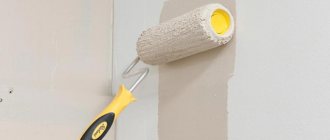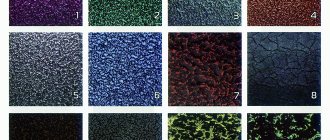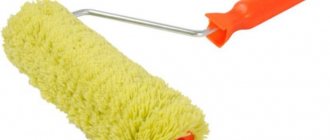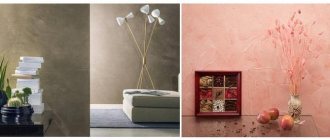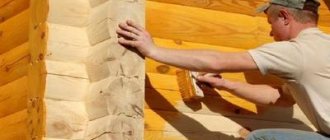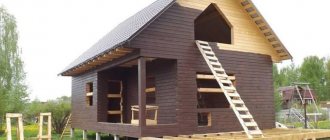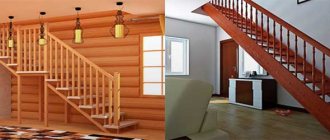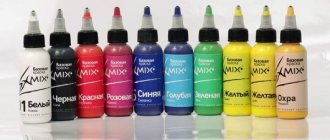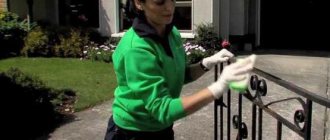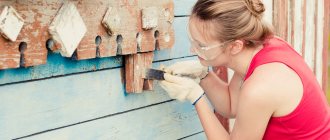When working with paint and varnish products, it is necessary to protect the respiratory system from harmful, toxic fumes. It is important to use a paint respirator when painting, it will provide protection from exposure to toxic fumes and should be used by both beginners and professionals in the painting industry. This article will discuss the main types of respirators, their functions, selection rules and the negative consequences of neglecting the use of a mask.
Purpose of the respirator
This mask protects a person’s face and is used during various jobs that involve the use of chemicals, such as paint. Toxic vapors, along with the air, enter the human respiratory organs, from where they penetrate the circulatory system and can lead to mild and severe poisoning. When applying paint, paint masks are used. Special protective masks are worn by:
- during dyeing, to protect the respiratory system;
- when working with chemical, toxic fumes;
- during work with spraying;
- during renovation and construction work, when there is too much dust in the room;
- in the production of paints and varnishes.
To use restaurateur, you need to analyze the following conditions:
- frequency and frequency of work;
- type of harmful chemical products;
- the conditions under which the work is performed;
- indicator of pollutant concentration.
Types of respirators and masks
Respirators can be divided into several categories. According to their intended purpose, masks are of the following types:
- construction They are used for repair or construction work (this is what will be discussed in our article);
- medical. Used to protect against viruses and diseases.
Also, according to their structure, respirators can be divided into:
- standard – models covering the entire lower part of the face;
- panoramic half masks (cover only the nose and mouth);
- masks that completely cover the entire face.
Types of respirators and masks
How to choose the right protective mask
Only an experienced, qualified specialist painter can give the correct answer to the question of which respirator or face mask is best to use in a given situation. If a person has never performed repair, construction or painting work, it will be difficult for him to choose a suitable respirator. The following information will help you choose the right respiratory protection mask. Several types of respiratory models are produced today:
- half masks;
- masks that completely cover the entire face;
- protective masks with air supply;
- full face masks complete with breathing equipment that maintains constant air pressure.
Respiratory protection masks are available in reusable and disposable versions. It is desirable that a respirator for painting have replaceable valves and filters, and that the protective material is of high quality and does not cause allergic reactions. A person should not feel discomfort while using a face mask.
All masks can be divided into two types of respirators, which differ from a technical point of view. They protect the respiratory tract from odors, dust particles, coarse dust and chemicals:
- Filtering respirators. They are equipped with special filters through which the inhaled air passes. Structurally, these masks resemble gas masks.
- Insulating. This type of respirator includes a special container for an oxygen mixture supplied through a hose to the respiratory organs.
One of the most important characteristics of an anti-aerosol and anti-dust respiratory device is the protection class. All protective masks are divided into 3 classes:
- FFP1. This includes class 1 filtering half masks. They retain more than 80% of harmful substances in the air;
- FFP2. This class includes filtering half masks that filter more than 94% of harmful impurities;
- FFP3. A filter half mask of this type retains 99-100% of harmful substances.
Choosing a respirator for car painting
Using anti-aerosol filters when painting
Anti-aerosol filters are designed ONLY to filter harmful aerosols (dust, smoke, fog). Complete with a half mask, it can be used if there is no odor. Those. when performing polishing, grinding and other work that results in the appearance of fine particles in the air.
Thus, using anti-aerosol filters when working with paints will not protect you from the harm of organic gases and vapors.
Concentration of harmful substances up to 50 MAC.
At this concentration level, it is recommended to use a half mask with gas and aerosol protection filters:
- Paints and solvents emit organic gases and fumes. To protect against them, gas filters with grade A are used - A1, A2, A3. The number after “A” indicates the efficiency class. The higher the class, the longer the filter will protect.
- Since the spray gun sprays paint, turning it into an aerosol, we also need anti-aerosol protection. Such filters are marked P - P1, P2, P3 - and are anti-aerosol.
The combination of anti-gas and anti-aerosol filters provides the longest possible protective effect for the user. In the absence of protection against aerosols, the gas filter will use up its resource faster.
The concentration of harmful substances is above 50 MAC.
At high concentrations, the use of a respirator for painting cars and parts is prohibited. This is due to the fact that the suction coefficient of UNIX respirators is no more than 2%. And at high concentrations, you will be inhaling harmful substances in dangerous concentrations.
The suction coefficient reflects how much air from the external environment can penetrate under the mask not through filters, i.e. along the obturation line. Therefore, when exceeding 50 MAC, it is necessary to use full-face masks.
For example, UNIX and MAG panoramic masks have a suction coefficient of no more than 0.05%. They can be safely used in combination with gas filters of brand A and additional anti-aerosol protection P.
To avoid damage to panoramic glass by paint, you can use additional protective films. It is important to note that filter gas masks are used provided that the concentration of harmful substances in the air does not exceed 0.5% of the total volume of air.
Types of respirators
They produce many different types of painting respirators, as well as various painting masks. To ensure safe application of paints and varnishes, you need to choose a respiratory model that can protect against fumes of those chemicals that boil at temperatures less than 60 degrees.
Which mask is better to choose? There are several excellent options, for example, PPM-88 and RU-60M are very popular; they are used mainly for protection against paint fumes. These models are not suitable for use in a paint shop, in complex technological production, or during manipulation with various building mixtures.
A 3M respirator is excellent for repair, construction and finishing work. This device protects not only from paint fumes, but also from dust, gas and particles of various substances. 3M products are of high quality and are reliable devices that effectively protect breathing over a long period of time. These respirators for painting and other work meet all modern safety requirements; they fit quite tightly to the skin of the face, so during inhalation, dust particles and paint vapors do not penetrate the respiratory system, and therefore do not cause harm to human health. The cost of 3M respirators is relatively low, affordable for everyone.
If you have to apply paint that contains many toxic substances, then the paint mask will not effectively protect the respiratory tract. And if a person has to work in a room in which the dust concentration is several times higher, then a regular protective mask will not give the necessary protective result. In such situations, a special protective suit is suitable for applying paint or other finishing materials.
Special personal protective equipment is produced for applying paint to cars. Such a paint mask provides reliable protection against harmful, toxic substances, for example, xylene, toluene, benzene, and various carbon disulfide compounds. To paint the body or parts of a car, you need to purchase a special filtering respirator for paint fumes.
It is unacceptable to apply paint to a car indoors without a respirator or use a paper mask. Some workshops use simple foam rubber bandages for workers, which are secured with ordinary ties; it is very harmful to breathe toxic paint fumes through such devices.
What to look for when choosing a respirator
Purpose
It is necessary to determine the conditions of its operation. The respirator can be used for protection against gases or dust; universal use is possible.
View
Sellers offer half masks and full-face respirators, which can be equipped with oxygen supply as well as high-pressure assisted breathing apparatus.
Half mask respirator.
Full face respirator.
Filtration class
Respirators are produced in three classes of filtering activity: FFP1, FF2P, FFP3. A product with a higher FFP3 class performs cleaning more efficiently and is used to work in the most difficult conditions.
Application time
There are disposable models that are thrown away after use, or reusable protective equipment. Reusable ones must be processed upon completion of work.
Disposable respirator.
Reusable respirator.
Filter type
There are products on sale with filter elements for gases, dust, and there are combined types.
Size
The respirator should fit snugly on the face, not droop, and reliably protect the mouth and nose of the worker.
Reliability of fastening
Reusable products should be purchased with wide straps. They do not create discomfort when worn, and securely fix the respirator on the face.
Let's move on to the best models of respiratory protective equipment, which are recommended by experts and users.
Types of filters
Filtering respirators operate by creating and temporarily holding a cushion of air. For example, a 3M respirator has a filter installed that traps air, while harmful particles settle on the protective material; the respirator works on the principle of absorption. When the air is purified, it is directed into the lungs; this principle is very important during repair and finishing work and when applying paint. Coal or cotton wool folded in several layers is used as a protective filter material.
They produce respirators not only against paint fumes, but also have dust filters that provide protection from the smallest dust particles. Anti-aerosol filters are also made; they protect against small aerosol particles that are formed during paint spraying.
Vapor and gas respirators protect against fumes that either have an odor or may be odorless. These substances are very dangerous as they can cause serious harm to human health. Gas masks are divided into 2 groups:
- combined. This type is very popular; respirators of this group effectively cope with various influences at the same time, however, these masks are quite expensive;
- insulating. They are more effective than filter models because they do not allow chemicals to come into contact with the skin of the face. Thanks to this, a person will not be poisoned by finely dispersed particles and will not experience an allergic reaction.
3M 7502 size M
The low breathing resistance of the device and the soft sealing surface make the model comfortable during long-term wearing. Equipping with a Cool Flow valve significantly reduces heat accumulation by venting exhaled air. Two filters in the design allow you to evenly distribute the weight and not block your view. Used with 3M bayonet filters, the model provides protection against vapors, gases, and/or harmful particles. Accessories and parts help you maintain the right level of protection and comfort.
Type
: half mask.
Size
: M.
Adjustment straps
: There is.
Weight
: 136 g.
Cost: from 1900 to 3100 rubles.
3M 7502 size M
Toxic Hazards
It is important to know that many chemical compounds and paint vapors entering the human body through the respiratory system lead to a state of hypoxia. The first thing that affects the central nervous system is the following symptoms:
- coordination of movements is impaired, it is difficult to navigate in space;
- there is a fear of bright and dim light;
- loss of smell and taste;
- various hallucinations appear;
- panic attacks occur.
Poisoning with toxic substances causes the following somatic reactions:
- dizziness;
- nose bleed;
- joint pain;
- vomiting that is not associated with spoiled food;
- tachycardia (rapid heartbeat).
To prevent the above symptoms from occurring, it is important to use a suitable respirator when applying paint or when working with chemicals. If one of the listed symptoms occurs, you should immediately go outside and seek medical help. In some cases, chronic poisoning occurs due to the fact that a person systematically works with harmful chemical products without using a respirator or does not use it correctly.
Classification of painting masks
Devices dependent on ambient air - filter masks
Partial protection mask for short working intervals.
Painting half mask that uses ambient air
The two-stage filter in this half mask guarantees the highest level of protection (up to 30 maximum permissible concentration values - AGW/MAK) from dust, particles and organic solvent vapors when painting in small volumes. The half mask provides comfortable breathing, comfortable work and good visibility. Also suitable for people working with glasses.
ADVANTAGES:
• Does not tie you to a specific workplace
• Low purchase price
• Ease of handling
FLAWS:
• An objective assessment of filter efficiency is impossible (for safety reasons, frequent replacement of cartridges is necessary).
• Inhalation resistance causes increased physical strain
• Limited filter life
• High long-term operating costs
• The mask is heavier, because the cartridges are attached to the mask body
Devices independent of ambient air - ventilated paint masks
Ventilated Half Mask
Combines a ventilated half mask and a carbon filter - a good alternative to a full protection mask:
• Purifies the air in the same way as a full protection paint mask
• Half mask made of natural rubber and neoprene with anatomical sealing edge, resistant to solvents
• Perfect fit, wide view
• Hot air and moisture do not accumulate inside the mask
Advantages
When choosing protective equipment, you need to pay attention to their main advantages:
- light weight, so the body will not be loaded;
- low resistance during the breathing process;
- a sufficiently long period of time during which you can use masks.
If you have to work with paints that contain a lot of toxins, it will be difficult for a respirator to protect your respiratory organs from odors, since toxins are absorbed even through the skin. In such cases, a full protective suit is needed.
A protective painting suit will protect your skin and prevent toxins from being absorbed into your body.
How to use?
There is a general standard for the use of respirators when carrying out painting work. When using them, it is important to follow the instructions.
- Check the integrity of the respirator. It should not have visible damage, punctures, or tears.
- Make sure that the selected type of PPE corresponds to the level of environmental contamination. FFP1 will protect at levels up to 4 MPC, while FFP3 will ensure safety at 50 MPC. If necessary, you need to install cylinders and replaceable filters.
- Take the respirator in your hand so that its fasteners hang freely and the mask lies in your palm.
- Apply PPE to your face , covering it from the bridge of your nose to the bottom of your chin. Fix the upper fastening on your head. The second elastic band should pass under the line of the ears - this is the only way to ensure a complete and tight fit of all parts of the mask.
- Use your fingers to press the respirator tightly in the area of the bridge of the nose, adjusting it taking into account the features of your face.
- Check for correct fit. Cover the surface of the respirator with your palms and exhale sharply. If air escapes along the fitting strip, you need to adjust the fit of the product again.
- Respiratory PPE should be stored in accordance with the manufacturer's recommendations, in conditions of normal humidity, and in the absence of direct contact with sunlight. After the expiration date, the product must be replaced.
Taking into account all these points, it is possible to ensure the correct use of paint masks and other types of respirators when working with paints and varnishes.
For tips on choosing a respirator, watch the video below.
Purpose of personal protection
Individual protection is used in the following cases:
- from exposure to various toxic gases;
- for working with couples;
- when manipulating spraying.
The respirator is used not only for various painting works on various surfaces, but also for all types of repairs, since it protects the respiratory system from odors, dust and small parts of paints and varnishes.
Respiratory devices for painting can be used once or several times. If you use a reusable option, then after each use you need to change the filter. The inside must be disinfected before use and moisture must be removed periodically during operation.
Types of harmful substances
Substances hazardous to the human body are released at various stages of painting work.
- When applying paints and varnishes, starting with the primer and ending with the finishing coat of varnish.
- While the coating is drying. At this stage, the solvent evaporates.
In addition, during the process of applying paint to a car body, micro drops of paint float in the air, which can also enter the respiratory system. As you can see, a respirator is needed at all stages of painting work performed on a car.
Among the most harmful types of substances that are released in the air are:
- isocyanate vapors.
- carbon disulphide.
- xylene, toluene (benzene derivatives).
- benzene.
When the concentration of these substances in the airspace of the work area exceeds, they become dangerous to the human body.
Personal protective equipment for painters
The basis of the master’s respiratory system protection is the filtration of air entering the lungs using special systems. And for almost all devices and protective masks, this system is different, but they are all aimed at eliminating the entry of harmful substances into the human body. In its form, a respirator is a mask that covers all respiratory tracts and includes filters to clean the incoming air. Filters can be anti-dust, universal and gas.
We do not recommend using the simplest protective equipment for painters, such as a paper or gauze mask, since their effect is minimal.
Options for respirators with built-in filters
The main task of a respirator is to retain not only dust present in the work area, but also to filter harmful chemical suspensions. One of the popular types of such devices is RU-60M. The system of this protective device has a built-in slot for filters aimed at various types of harmful substances. Each of the filters has a technical description that describes the list of harmful gases that it copes with.
Experienced painters advise using RU-60M only with original filters, since otherwise it will be difficult to guarantee the proper level of protection. Therefore, when purchasing this respirator, take into account the cost of its components.
There are many cheap analogues of domestic or Chinese production on the market. For example, the RPG-67 respirator model, the price tag for it ranges from $5 to $10. But it is better to consider purchasing more expensive models, for example, from. And perhaps visually this is the same thing, but in terms of the level of protection you will receive a much higher quality.
Each respirator you choose must meet one of three standard groups. The document has the title: “The European quality standard for respirators for painting work is EN-149:2001.”
- FFP1 limit value for the concentration of harmful substances is more than 2 mg/cu. m. The concentration of the dispersed phase does not exceed 8 mg/cubic meter. m. This category includes plastering work and the release of non-toxic dust into the air.
- FFP2 with a maximum concentration of harmful substances exceeding 0.05 mg/cu. m and dispersed concentration below 0.5 mg/cu. m. This group includes coal and asbestos dust, as well as toxic air components during welding, soldering and simple car painting.
- FFP3 limit value for the concentration of harmful substances is below 0.05 mg/cubic meter. m and the concentration of the dispersion does not exceed 1.5 mg/m3. m. Protection is necessary from lead, cadmium and antimony released into the air during painting work and soldering with lead and acid.
We recommend: Joint roller - design and technique for working with the tool
Related article: Damage to a plastic bumper - what is needed for repair?
Respiratory protective equipment
Before using any respirator for car painting work, you should carefully study the instructions and the filtering capabilities of this device. It so happens that even the most expensive options do not solve the issue of protection from the harmful substances you are interested in, and may allow toxic particles of material or gases to pass through. For example, using a carbon respirator, you protect the body from many harmful substances, but at the same time, this type of device allows isocyanides to pass through.
If you are carrying out automotive painting work in a poorly ventilated garage, it is better to use an insulating type of respirator that will prevent the entry of all harmful types of fumes. Their cost is high, but some craftsmen remake the RPG-67 respirator by connecting a hose with the required diameter and connecting it to a compressor with clean air.
There is such a definition as the expected degree of protection - NEO (the permissible range is from 50 to 10,000). For isolating respirators, this figure is maximum. And filtering protective masks operate in the NEO range from 5 to 50.
Do you use protective products when painting your car? Write your comment below.
